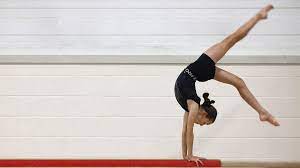Gymnastics for kids can start earlier than most parents might think — and earlier often means better. Research and experience from coaches across Australia suggest that children as young as 2 or 3 can safely and effectively begin gymnastics training. While this doesn’t mean full routines on the balance beam, it does mean age-appropriate movement, coordination, and strength-building exercises that form the building blocks of gymnastics.
The ideal age to start gymnastics varies depending on the child’s physical development, confidence, and interest. However, experts generally agree that enrolling children between the ages of 3 and 5 provides the best foundation for long-term skill progression, body awareness, and fun in a structured environment.
Why Should Kids Start Gymnastics Early?
Early childhood is a critical time for developing physical literacy — the ability to move with confidence and control in a wide variety of physical situations. Gymnastics classes designed for young children help nurture this early development in a fun, engaging way.
Here are some key benefits of early gymnastics participation:
- Motor skill development: Activities such as tumbling, jumping, and climbing improve balance, coordination, and agility.
- Strength and flexibility: Kids develop core strength and flexibility that can prevent injuries and assist in other sports.
- Cognitive gains: Learning sequences and routines boosts memory, listening skills, and concentration.
- Social growth: Group classes promote cooperation, turn-taking, and following instructions — ideal for school readiness.
By starting young, kids also develop a comfort level with movement and challenge, which can lead to greater confidence both in and out of the gym.
What’s the Best Age Group for Gymnastics for Kids?
While toddlers (ages 2–3) can begin parent-assisted classes, the most impactful learning period begins between ages 4 and 6. At this stage, children are developmentally ready to follow instructions, regulate emotions, and participate independently in class.
Age-by-Age Breakdown
- 2–3 years: Introduction through movement and play. Parent-assisted sessions focus on basic motor skills.
- 4–5 years: Kids start participating independently. Classes focus on foundational gymnastics skills like rolls, balances, and jumps.
- 6–8 years: Skill refinement begins. Children can focus for longer periods and follow multi-step routines.
- 9+ years: Competitive or recreational pathways become clearer. Students often specialise or move to advanced programs.
Starting early gives kids a head start in mastering the basics, building strength, and developing the mindset needed for long-term success.
How Do You Know If Your Child Is Ready?
Age is a helpful guideline, but it’s not the only factor. Look out for these readiness signs:
- They show interest in movement (cartwheels, jumping, climbing).
- They can follow simple directions.
- They interact well with other kids in a group setting.
- They have basic balance and coordination.
- They enjoy challenges and respond well to encouragement.
If your child ticks most of these boxes, they’re likely ready for a beginner’s gymnastics program.
Are There Any Risks with Starting Too Early?
For toddlers, safety is a valid concern. However, quality programs specifically designed for young children reduce risks by focusing on play-based movement, soft equipment, and close supervision.
The real risk lies in unrealistic expectations — pushing young kids into skill progression too quickly can lead to frustration or injury. The goal at these early stages isn’t perfection, but enjoyment and exploration.
Programs that take a child-led, age-appropriate approach see better long-term retention and development. It’s about planting the seed, not rushing the growth.
What Should Parents Look for in a Gymnastics Program?
Whether your child is 3 or 10, the program you choose should emphasise safety, qualified coaching, and a welcoming environment.
Key features of a good gymnastics program for kids include:
- Accredited coaches with experience in early childhood development
- Equipment suited to different age groups and abilities
- Small class sizes for individual attention
- A progression pathway from beginner to advanced
- Emphasis on fun and learning, not just competition
Choosing a program with a strong reputation and a commitment to child safety can make a big difference in your child’s experience.
Can Older Kids Start Gymnastics Too?
Absolutely. While younger kids may have an advantage in flexibility and fearlessness, older children can still thrive in gymnastics — especially if they’ve had experience in other sports like dance, swimming, or martial arts.
The key is finding a program that matches their level and learning pace. Many centres offer beginner classes for older age groups or even fast-track options to help them catch up.
FAQs
Is gymnastics safe for toddlers?
Yes — when delivered by qualified instructors in a structured, age-appropriate environment. Most centres use padded floors, soft equipment, and simple exercises to keep toddlers safe while they move and explore.
What if my child doesn’t enjoy gymnastics?
That’s okay! Gymnastics should be fun. If your child isn’t enjoying it, take a break and try again later — or explore other physical activities. The goal is movement and enjoyment, not pressure.
How often should kids attend classes?
For beginners, one class per week is ideal. As skills improve and interest grows, some kids may move to 2–3 sessions weekly, especially if they enter pre-competitive or competitive levels.
Final Thoughts: Start with Play, Build for Life
Gymnastics for kids is more than just flips and beams — it’s a gateway to confidence, coordination, and lifelong fitness. Starting early can be beneficial, but the best age to start depends on your child’s readiness and enthusiasm. Whether they’re tumbling at age three or joining for the first time at eight, the right program can turn curiosity into capability.
And if you’re still deciding on the right time, consider exploring a beginner gymnastics program to see how your child responds to guided movement and fun-filled learning.

